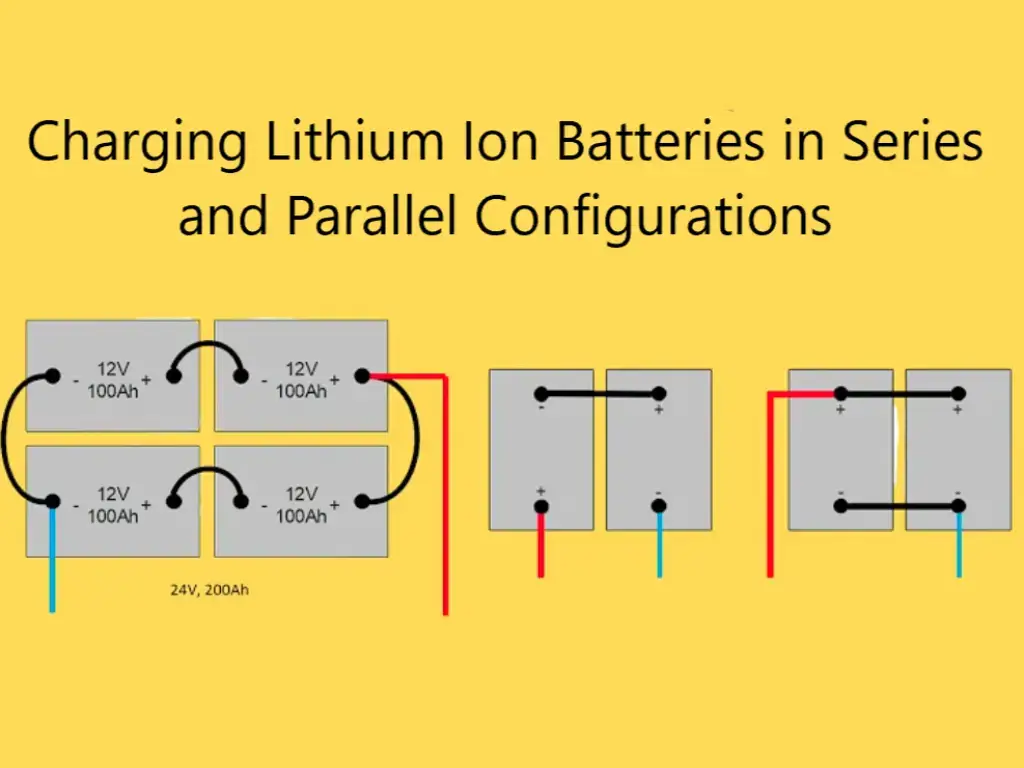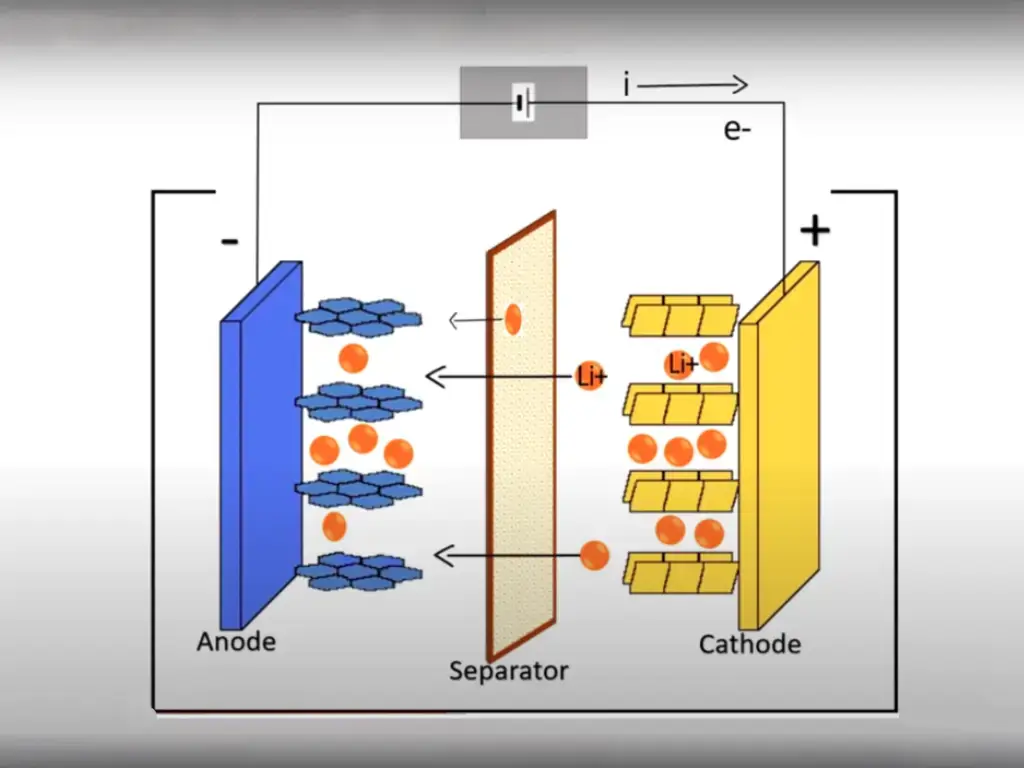Introduction
The Significance of Grasping Watt Hours and Amp Hours
Understanding the concepts of watt hours and amp hours is paramount in deciphering the intricacies of energy consumption and battery capacity. These units serve as fundamental metrics in the realm of electrical engineering, providing crucial insights into the efficiency and performance of various devices. From portable electronics to renewable energy systems, a profound comprehension of watt hours and amp hours empowers individuals to make informed decisions regarding energy usage, storage, and management.
Unveiling Their Ubiquitous Presence in Energy Measurement
Watt hours and amp hours are ubiquitous terms deeply entrenched in the fabric of modern-day energy measurement practices. Whether evaluating the endurance of a smartphone battery or assessing the efficiency of a solar power system, these units are indispensable tools for quantifying energy-related parameters. By delving into the nuances of watt hours and amp hours, individuals can navigate through a sea of technical specifications with confidence, enabling them to select devices that align with their energy needs and sustainability goals.
Navigating Through the Labyrinthine World of Battery Capacity
At the heart of battery technology lies the crucial interplay between watt hours and amp hours. The capacity of a battery to store electrical energy is often expressed in these units, shedding light on its longevity and performance characteristics. In a world where portable gadgets reign supreme and electric vehicles are on the rise, unraveling the mysteries surrounding watt hours and amp hours holds immense value for consumers seeking to optimize their energy usage while minimizing environmental impact.
Delving into Amp Hours (Ah)
Definition of Amp Hours as a Unit of Electric Charge
Amp hours (Ah) serve as a vital metric in the realm of electrical engineering and energy storage. In essence, an amp hour is a unit that quantifies the amount of electric charge that can flow through a circuit over one hour when there is a steady current flow of one ampere.
This unit helps in understanding the capacity of batteries to store and deliver electrical energy efficiently. For example, if a battery has an amp hour rating of 10Ah, it implies that it can provide a current flow of 10 amperes for one hour.
The Relationship Between Current Flow and Time in Determining Amp Hour Rating
The concept of amp hours is intricately linked to the relationship between current flow and time. In simple terms, the higher the current flow drawn from a battery or device, the faster its amp hour rating depletes.
This relationship underscores why understanding both current consumption and duration are crucial when assessing the performance and longevity of batteries in various applications. For instance, devices with higher power requirements will drain batteries with lower Ah ratings more quickly than those with higher Ah ratings.
Common Applications Where Amp Hours Are Utilized, Such as in Batteries for Electric Vehicles
Amp hours find widespread utility across numerous applications where electrical energy storage is imperative. One prominent arena where amp hours play a pivotal role is in batteries designed for electric vehicles (EVs). The Ah rating of EV batteries directly influences their driving range and overall performance.
By evaluating how much charge an EV battery can hold in terms of Ah, manufacturers and consumers alike can gauge factors like travel distance per charge cycle and operational efficiency. The use of Ah ratings extends beyond EVs to encompass portable electronic devices, solar power systems, uninterruptible power supplies (UPS), and more – showcasing the versatility and importance of this metric in modern technology.
Understanding Watt Hours (Wh)
Definition of Watt Hours as a Unit of Energy Consumption Over Time
Watt hours (Wh) serve as a crucial unit for measuring the energy consumption of electrical devices over a specific period. Essentially, one watt hour represents the energy consumed by a device that operates at a steady rate of one watt for one hour.
This unit is widely used to quantify the total amount of energy utilized by various appliances, such as light bulbs, laptops, and electric vehicles, providing an insightful perspective on their power requirements and efficiency. Understanding watt hours enables consumers to make informed decisions regarding energy usage and conservation.
Relationship Between Power (Watts) and Time in Determining Watt Hour Rating
The calculation of watt hours involves multiplying the power consumption in watts by the duration of operation in hours. Mathematically, watt hours = power (watts) × time (hours). For instance, if a 60-watt light bulb is left on for 5 hours continuously, it will consume 300 watt hours (60 watts x 5 hours).
This formula emphasizes the direct correlation between power rating and operating time in determining the total energy consumption represented in watt hours. It highlights the significance of managing both power usage and duration to optimize energy efficiency.
Comparison to Amp Hours in Terms of Measuring Energy Storage Capacity
While amp hours measure the electric charge capacity of batteries or devices, watt hours provide a more comprehensive insight into actual energy usage over time. The relationship between voltage and current is crucial in understanding this distinction – whereas amp hours focus solely on current flow capacity (amperes), watt hours consider both current and voltage to represent overall energy storage capacity accurately. In essence, comparing amp hour ratings alone may not fully capture the efficiency or performance potential of a battery or device, making it essential to also evaluate watt hour specifications for a holistic perspective on energy storage capabilities.
The Intricacies of Watt Hours vs. Amp Hours
Watt hours reflect both voltage and current, while amp hours only consider current flow
When delving into the realm of energy measurement and consumption, it becomes apparent that watt hours and amp hours offer distinct perspectives. Watt hours, unlike their counterpart, take into account not only the current flowing through a system but also the voltage at which it operates. This dual consideration is crucial in providing a comprehensive understanding of how much energy is being consumed over a specific period.
In essence, watt hours represent the total amount of electrical work done within a system by factoring in both the force (voltage) driving the electricity and the rate at which it flows (current). Conversely, amp hours focus solely on the flow rate of electrical charge through a circuit or battery.
By measuring the current over time, amp hours provide an indication of how long a device can operate before needing recharging. However, this unit fails to capture variations in voltage that can significantly impact energy usage.
For instance, two batteries with the same amp hour rating but different voltages will actually store different amounts of energy due to this oversight. Therefore, while amp hours offer a simplified view of battery capacity in terms of runtime, they lack the precision offered by watt hours in accounting for variations in voltage.
Watt Hours Provide a More Accurate Representation
In assessing energy consumption or storage capacity, watt hours emerge as the superior metric for providing an accurate portrayal of actual usage patterns. By incorporating both voltage and current into its calculation, watt hours offer a holistic view that considers not just how much charge flows but also at what intensity it does so.
This nuanced approach allows for more precise measurements that align closely with real-world scenarios where fluctuations in voltage can significantly impact overall energy consumption. Comparatively speaking, relying solely on amp hour ratings may lead to misconceptions about actual energy efficiency or battery performance.
A device boasting high amp hour capacity might seem impressive on paper but could falter when placed under varying voltage conditions where watt hour ratings would be more telling. As consumers increasingly demand transparency about their energy usage habits and seek products that align with sustainable practices, having access to accurate metrics like watt hours becomes paramount for making informed decisions.
The Significance of Considering Both Factors
When evaluating battery performance or assessing energy efficiency levels, it is imperative to take into account both factors—voltage and current—offered by watt hours rather than relying solely on amp hour readings. The synergy between these two measurements paints a clearer picture of how efficiently electricity is being utilized within a system or device. By considering both aspects simultaneously, one gains deeper insights into not only how long a battery can power a device (amp hours) but also how effectively it does so given varying operating conditions (watt-hours).
Failing to consider either voltage or current independently limits our understanding of overall energy usage patterns and hinders efforts to optimize efficiency levels effectively. Therefore, by embracing both metrics harmoniously—a task facilitated by watt-hour calculations—we pave the way for smarter decision-making regarding our power consumption habits and investments in technologies designed to enhance sustainability efforts.
Example 1: Calculating the Total Energy Capacity of a Battery
The Art of Balancing Amp Hours and Watt Hours
When evaluating the energy capacity of a battery, it is crucial to consider both its amp hour (Ah) and watt hour (Wh) ratings. Amp hours indicate the total charge capacity of the battery, i.e., how many amps can be delivered over one hour.
On the other hand, watt hours represent the total energy content of the battery, which takes into account not only current but also voltage. To calculate the total energy capacity, one must multiply the amp hour rating by the voltage to obtain watt hours.
This calculation provides a more accurate representation of how much energy can be stored and delivered by a given battery. Furthermore, understanding both amp hours and watt hours allows for better estimation of how long a battery will last under specific usage conditions.
For example, if a battery has an amp hour rating of 10Ah and operates at 12 volts, its total energy capacity would be 120Wh (10Ah x 12V = 120Wh). By knowing this combined value, users can make informed decisions about which batteries are best suited for their needs based on both charge capacity and energy content.
In practical terms, this knowledge empowers consumers to select batteries that align with their power requirements while considering factors like voltage compatibility with their devices. It also enables them to compare different batteries more effectively by looking beyond just one metric (amp hours) and considering the holistic picture painted by both amp hours and watt hours.
Example 2: Comparing Light Bulbs Based on Watt Hour Ratings
Shining Light on Efficiency Metrics
When choosing light bulbs for residential or commercial use, understanding watt hour ratings plays a pivotal role in determining their efficiency and cost-effectiveness. Watt hours measure how much power a light bulb consumes over time – essentially indicating its energy consumption rate. By comparing different light bulbs based on their watt hour ratings rather than just brightness or watts consumed at any given moment (which may vary), consumers can make more informed decisions regarding long-term energy usage.
For instance, comparing two LED light bulbs with identical brightness levels but different watt hour ratings can reveal substantial differences in their efficiency. A bulb rated at 9W that lasts for 8000 hours will consume less overall energy than another rated at 10W but lasting only 6000 hours when considering total watt hours consumed over each bulb’s lifespan.
This nuanced approach to comparing light bulbs highlights how focusing on watt-hour metrics provides a clearer understanding of their actual efficiency beyond initial specifications. By incorporating watt-hour ratings into light bulb selection criteria, consumers can not only save on electricity costs but also contribute to sustainability efforts by choosing more energy-efficient options that reduce overall power consumption without compromising illumination quality.
Example 3: Understanding Voltage's Impact on Watt Hour Calculations
The Voltage Variable in Energy Equations
Voltage plays a critical role in determining total watt-hour calculations as it directly influences both power output and overall energy storage capacity in batteries or electrical devices. Higher voltages lead to increased power delivery per unit time – meaning higher-wattage devices may require larger-capacity batteries operating at higher voltages to sustain optimal performance levels efficiently. To illustrate this concept practically, consider two rechargeable lithium-ion batteries with identical amp-hour ratings but differing voltages – one operating at 12V while another at 24V.
Although both may have similar charge capacities in Ah terms, when calculating total Wh values by multiplying Ah with V for each scenario (e.g.,10Ah x12V =120Wh vs.10Ah x24V =240Wh), it becomes apparent that higher voltage configurations result in significantly increased total energy storage despite equivalent amp-hour capacities. Understanding how voltage impacts watt-hour calculations is key when selecting batteries or electrical systems where maximizing performance efficiency is essential without sacrificing power output consistency over prolonged usage periods.
Conclusion
Understanding the nuances between watt hours and amp hours is essential for making informed decisions when it comes to purchasing electronic devices or batteries. By grasping these concepts and considering both factors when evaluating energy consumption, consumers can optimize their usage habits and choose products that meet their specific needs effectively.
Looking ahead, as battery technology advances rapidly, there is great promise for even more efficient and sustainable energy storage solutions that will continue to shape how we think about measuring energy capacities. Embracing these innovations will empower consumers to make eco-conscious choices while enjoying enhanced performance from their electronic devices.





1 thought on “The Voltage Conundrum: Navigating the Intricacies of Watt Hours and Amp Hours”
Your article is filled with insights and observations that are both profound and thought-provoking.